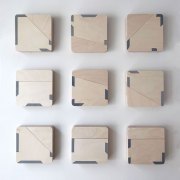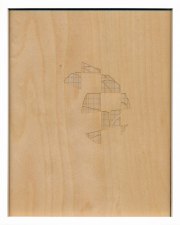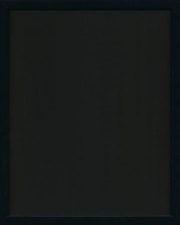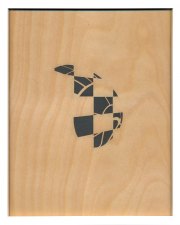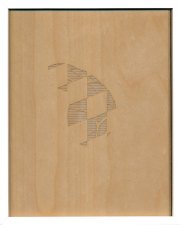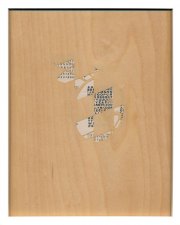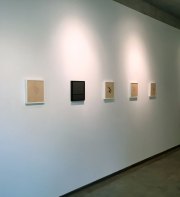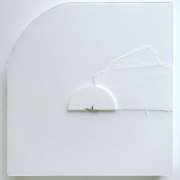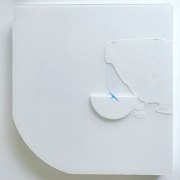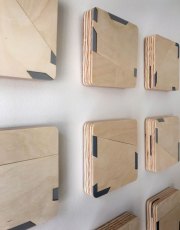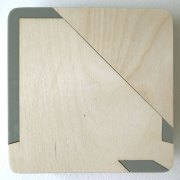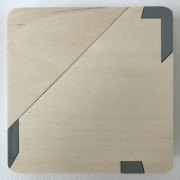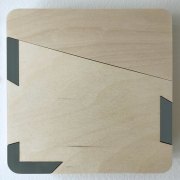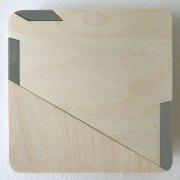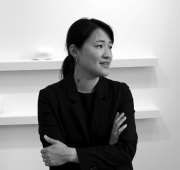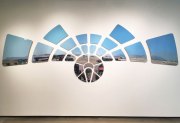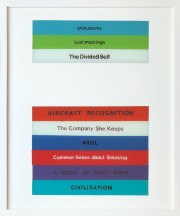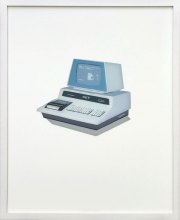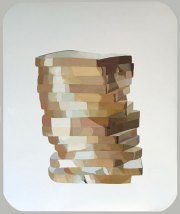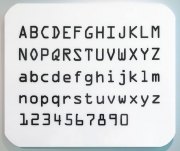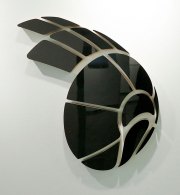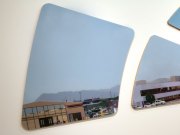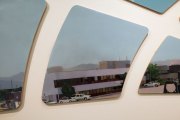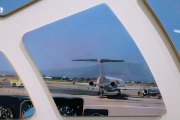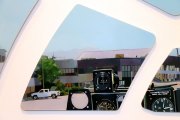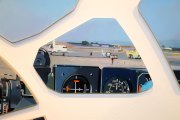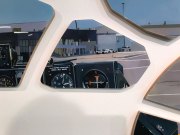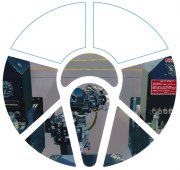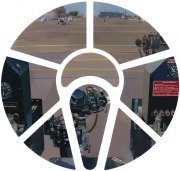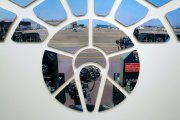
Maria Park and Branden Hookway, Training Setting, 2017, Detail
Acrylic Reverse Painted on Plexiglas and Mounted on Plywood, 56 x 166 Inches, 26 Panels
ARTIST RECEPTION
Saturday, March 3 , 2018, 5pm to 7pm
Facebook Event Page
EXHIBITION DATES
February 24 to April 4, 2018
Nancy Toomey Fine Art is pleased to announce an exhibition of works by Maria Park and Branden Hookway entitled Training Setting on view from February 24 to April 4, 2018. The gallery is located inside San Francisco’s Minnesota Street Project, 1275 Minnesota Street. The public is invited to the artist reception on Saturday, March 3, from 5pm to 7pm. Join the event page here.
Training Setting follows the debut of a collaboration between Maria Park and Branden Hookway at Cornell University in Fall 2017 that presented work using a diagrammatic language of flight cockpits and table settings to investigate the social and control protocols that underlie contemporary interfaces. To train within a technologized environment is to mediate formal and informal instruction-where a formal understanding of information and procedure coexists with an informal understanding gained through embodied action. In this sense, training is inherently an orientation toward both the actual and the virtual, as performance draws upon tacit knowledge according to formalized protocols. This exhibition is a further exploration on the language of flight instrumentation and display.

Maria Park and Branden Hookway, Training Setting, 2017, Installation View
Acrylic Reverse Painted on Plexiglas and Mounted on Plywood, 56 x 166 Inches, 26 Panels

Maria Park and Branden Hookway, 136, 2017, 14 pieces, Plexiglas and Plywood, 31 x 27.5 x 2 Inches
136 is a wall-mounted sculpture based on an exterior view of the Enola Gay’s windscreen. The reflective black Plexiglas surface acts as a mirror to our participation in the narrativization of history with its opacity suggesting the impossibility of either idealizing this history or separating out its place in the lineage of contemporary techniques of picturing the world through satellite imagery and global communication. Instruction 1-5, reveal the subtle variations in the cuts that are hidden in the layers that comprise 136.

Maria Park and Branden Hookway, Artificial Horizon 1, 2018, Acrylic, Plexiglas, and Wood on High-density EPS, 9 x 8.75 Inches
Artificial Horizon 1 and 2 refer to the flight instrument, also called an attitude indicator, which displays the pitch and bank of the aircraft and so its orientation to the ground-critical information when a pilot loses sight of the horizon. Studies in Calibration, a wall-mounted sculpture of layered Plexiglas and wood, refers to a continuous process of orientation, whether as a pilot reading a technological display or as a viewer processing at an abstract work of art.

Maria Park, Imprint 3, 2018, Acrylic Reverse Painted on Plexiglas, Mounted on High-density EPS, 30 x 36 Inches
Park’s Imprint 3 displays alphanumeric characters set in the OCR-A font, which arose in the early days of computer optical character recognition when there was a need for a font that could be recognized by both computers and humans. Each letter is reverse painted in different shades of black mimicking the matter-of-factness of an alphabet chart. This, combined with the shift in scale, plays on the recognizability of the font whose usage remains widespread in the encoding of checks, another technology destined for obsolescence. Stack (also by Park), which depicts a stack of sliced bread, refers to both data structures and to layering as an analog to the sedimentation of tacit knowledge and formal instruction. This language is carried throughout this exhibition with the stacking of plywood, Plexiglas, and high-density EPS. PET is a reverse-painted depiction of the first all-in-one home computer, PET 2001, which came out in 1977. Its form stands in contrast to the Norden bombsight, revealing how the transfer of military technologies to domestic use is often concealed by design.

Maria Park, PET, 2018, Acrylic Reverse Painted on Glass, 20 x 16 Inches
While the vernacular of diagrams found in manuals and instructional guides delimit a set of conditions and actions, their reconfiguration here addresses how the systems of control that underlie formal diagrams are propagated through everyday life. Just as flight instruments are means of reconciling the subjective experience of flight to a reality that might contradict it, the exhibition seeks to bring a heightened awareness of controlled environments and to mediate the tension between structured information and intuitive decisions.

Maria Park
Maria Park’s work examines ways that technology intervenes in our participation in the world. Ranging from serially based paintings to site-specific installations combining studio- produced and manufactured objects, her work explores human presence and agency within a media-reliant society. Since graduating with an MFA in Painting from the San Francisco Art Institute in 2003, Park’s works have been included in numerous exhibitions both nationally and internationally. Museum projects include solo exhibitions at The Kemper Museum of Contemporary Art in Kansas City, MO and the Museum of Contemporary Art in Santa Rosa, CA, and group exhibitions at the Johnson Museum of Art in Ithaca, NY, Contemporary Art Museum in St. Louis, MO, and the Seoul National Museum of Art in Seoul, South Korea. In 2012, Park was commissioned a permanent installation for the new building at Johns Hopkins Hospital in Baltimore, MD, and in 2016, completed the design of a 150-foot mural for the central subway temporary barricade at the Chinatown Station in San Francisco, CA, commissioned through the San Francisco Arts Commission in partnership with San Francisco Municipal Transportation Agency. This summer, her collaborative project (Oculi) with Austin + Mergold and consulting engineers Chris Earls, and Scott Hughes will be on view on Governors Island, NYC, as the winning proposal of the Figment NYC City of Dreams Pavilion competition. Awards include the MFA Grant Award from the Joan Mitchell Foundation (2003) and the Korea Arts Foundation of America Award (2002), and the Murphy Fine Arts Fellowship from the San Francisco Foundation. Her work is represented by Margaret Thatcher Projects in New York City and Nancy Toomey Fine Art in San Francisco, CA. Park resides in Ithaca, NY where she is an Associate Professor and Director of AAP Exhibitions and Events in the College of Architecture, Art, and Planning at Cornell University.

Branden Hookway
Branden Hookway is a cultural theorist whose interests include architecture, urbanism, design, and art; philosophy and critical theory; history of technology and science; organizational theory and human factors; and media theory and new media. His recent book from MIT Press, Interface (2014), discusses issues of subject formation, agency, power, and control, within contexts that include technology, politics, and the social role of games. He is the author of Pandemonium: The Rise of Predatory Locales in the Postwar World, and is currently working on a theoretical treatment of the cockpit as a prototype of human-machine interaction. He has worked in architecture, art, graphic design, and industrial design, and holds an M.Arch. from Rice University and a Ph.D. in the history and theory of architecture from Princeton University. He currently teaches in the Department of Architecture and the Information Science Department at Cornell University.
